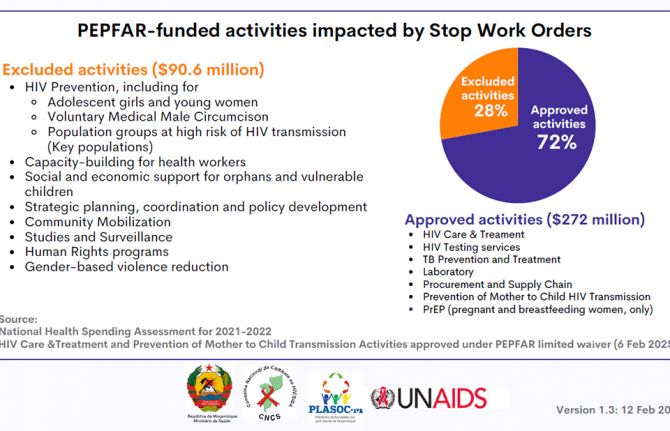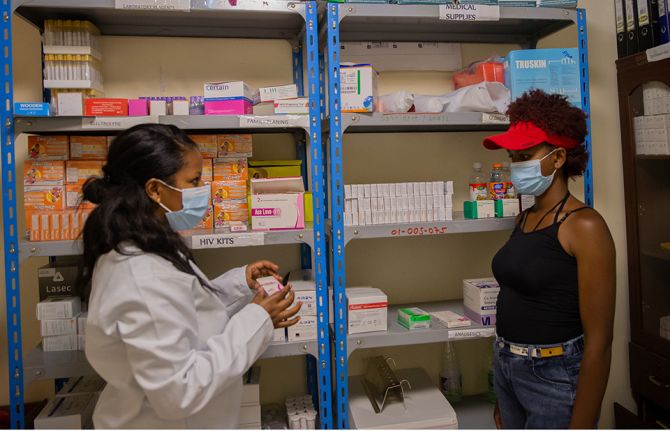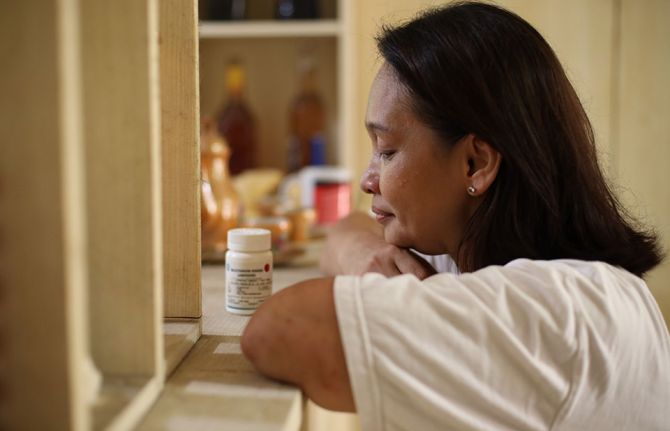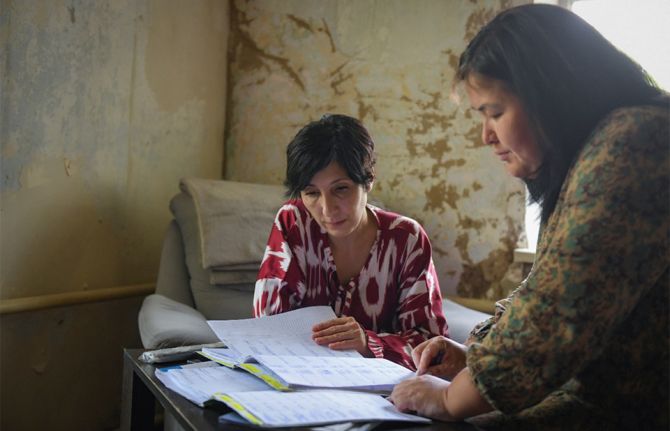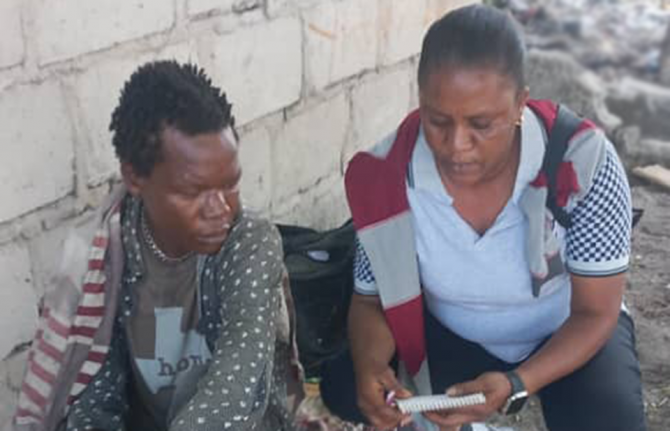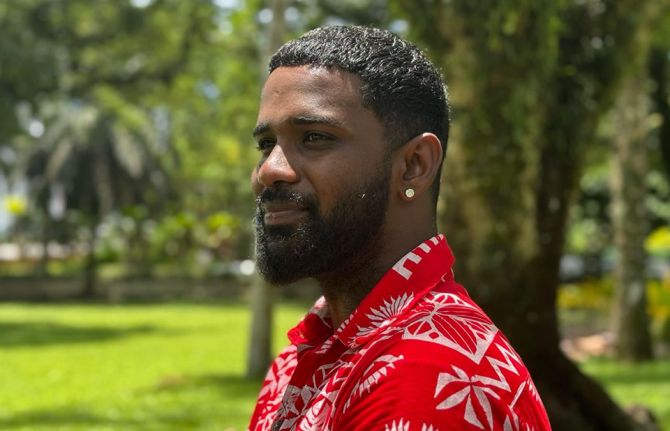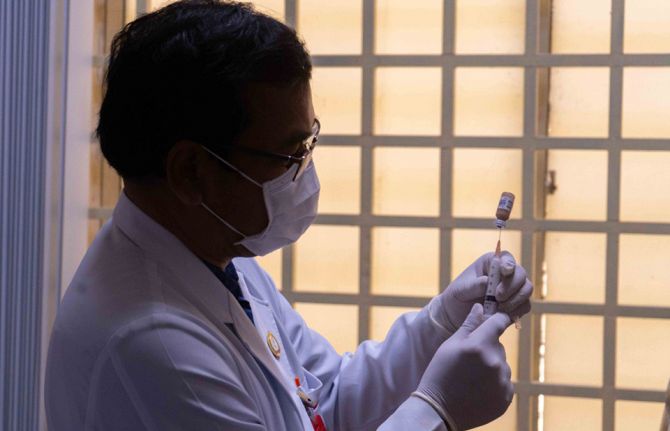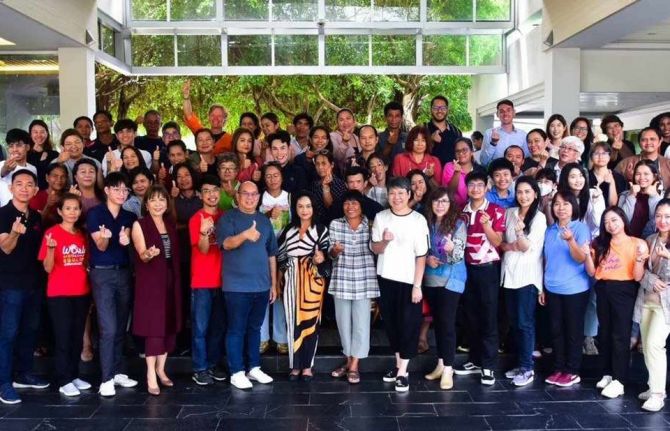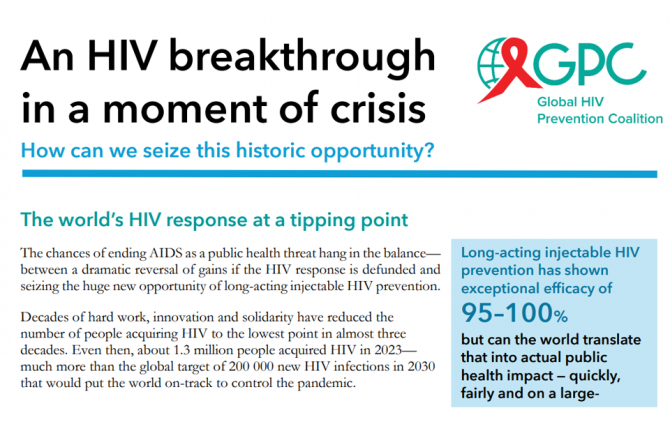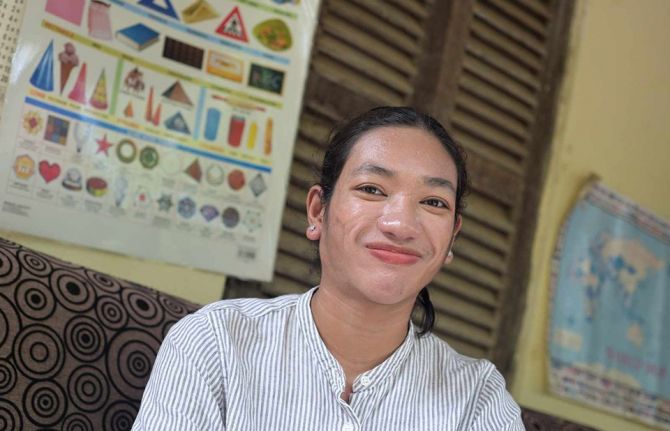
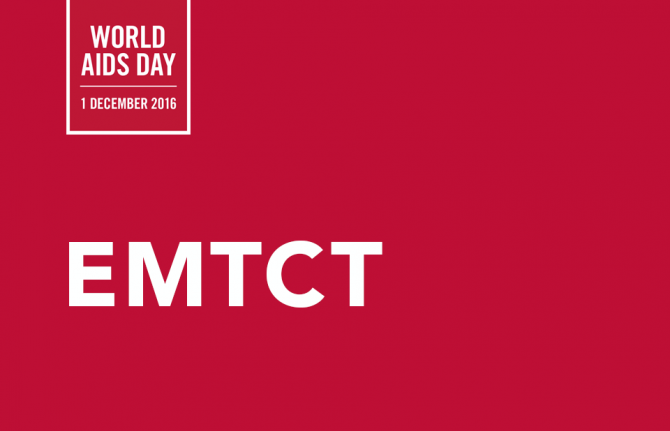
Update
Eliminating new HIV infections among children
24 October 2016
24 October 2016 24 October 2016The steady scale up and improvement of services to prevent mother-to-child transmission of HIV has reduced the annual number of new infections among children globally by 56% since 2010 and by 70% since 2000. Since 1995, an estimated 1.6 million new HIV infections among children have been averted due to the provision of antiretroviral medicines to women living with HIV during pregnancy or breastfeeding. The vast majority of these infections (1.3 million) were averted between 2010 and 2015. Complex challenges remain, however, to achieve the elimination of mother-to-child transmission of HIV.
Hands up for #HIVprevention — World AIDS Day campaign
Related

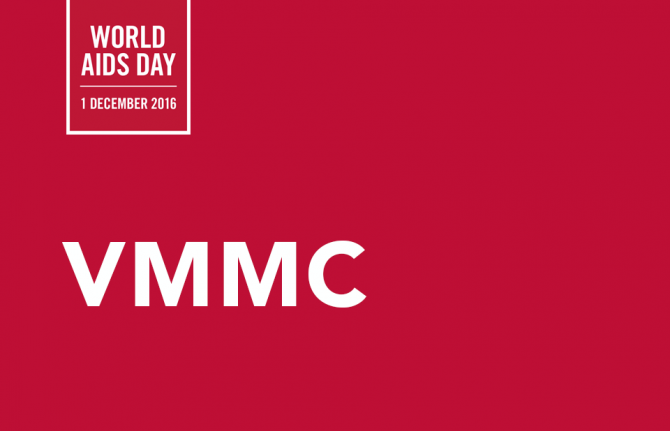
Update
Voluntary medical male circumcision
17 October 2016
17 October 2016 17 October 2016Voluntary medical male circumcision is a cost-effective, one-time intervention that provides lifelong partial protection against female-to-male HIV transmission. Modelling studies have suggested that achieving 80% circumcision prevalence among men aged 15 to 49 years by 2015—and then sustaining it—would avert 3.4 million HIV infections by 2025.
Since 2007, tremendous efforts have been made to scale up voluntary medical male circumcision in 14 priority countries in eastern and southern Africa that have high levels of HIV prevalence and low levels of male circumcision. By the end of 2015, nearly 11.6 million men in these countries had been medically circumcised.
Hands up for #HIVprevention — World AIDS Day campaign

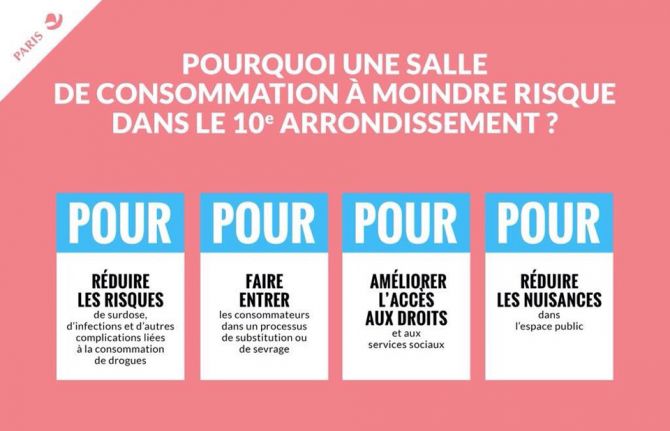
Feature Story
France opens its first safe injecting site for drug users
13 October 2016
13 October 2016 13 October 2016France’s first safe injecting site for people who inject drugs has opened in Paris.
Linked to the city’s Lariboisière Hospital, the facility can accommodate up to 400 people a day and is staffed by a full team of doctors, nurses and social workers. It is made up of three areas: a waiting room, a consumption room and a place where people can rest before leaving the site.
The aim of the facility, which is open to adults aged 18 and over, is to lessen the risks associated with injecting drug use, including HIV infection. Research shows that supervised injection sites also reduce crime and other social disorders linked to the public consumption of drugs.
The UNAIDS Executive Director, Michel Sidibé, congratulated France’s Minister of Health, Marisol Touraine, and the Mayor of Paris, Anne Hidalgo, on the opening of the site.
Additional drug consumption rooms are planned to open in other French cities, including Strasbourg and Bordeaux, in the near future.
Paris is a founder signatory of the Paris Declaration, which commits cities to ending the AIDS epidemic by 2030 by adopting a Fast-Track approach to their HIV epidemics.
Region/country
Related


Update
Investments in harm reduction programmes: the need to turn a global crisis into a global solution
14 October 2016
14 October 2016 14 October 2016Global progress
The world has come a long way in providing harm reduction services to people who use drugs. Harm Reduction International (HRI) data from the past decade show that there is now some level of harm reduction programming in over half of the 158 countries with documented injecting drug use. Where in operation, harm reduction has dramatically improved and protected the health, well-being and human rights of people who use drugs.
Global action
In 2016, at the United Nations General Assembly Special Session on the World Drug Problem in April and at the United Nations General Assembly High-Level Meeting on Ending AIDS in June, Member States secured strong commitments for harm reduction. These commitments now need to be translated into the necessary policy and programmatic changes, as well as investments in harm reduction programmes.
Global crisis
Despite the growing acceptance of harm reduction around the world, provision still falls far short of what is needed, particularly in prisons. At the last count, only US$ 160 million was spent on harm reduction in low- and middle-income countries. More worryingly, in recent years, as donors have started to shift funding to low-income countries, progress made is at risk because the vast majority of people who inject drugs live in high- and middle-income countries.
“People who use drugs remain criminalized around the world—an ineffective criminal justice response to a public health and human rights issue which continues to fuel HIV transmission,” says Jamie Bridge, Senior Policy and Operations Manager at the International Drug Policy Consortium. “Even where well-funded, well-designed harm reduction services exist, these will struggle to have an impact if the legal and policy environment stigmatizes people who use drugs and ultimately deters them from accessing support. Policy reform must therefore be seen as a core part of the response,” he added.
Global solution
Earlier this year data released by HRI and the Burnet Institute in HRI’s report The case for a harm reduction decade showed that it is possible to end the AIDS epidemic among people who inject drugs by redirecting as little as 7.5% of the US$ 100 billion currently spent each year on drug control to harm reduction.
HRI’s “10 by 20” campaign calls on governments to redirect 10% of their drug control spend to harm reduction by 2020. The impact this would have on ending the AIDS epidemic has already been described but it would also fund prevention and treatment for viral hepatitis, along with life-saving naloxone, which reverses opioid overdose. It would also strengthen networks for people who use drugs and civil society organizations that advocate for human rights and harm reduction.
“This World AIDS Day governments, donors and international agencies must not simply put their “hands up” for harm reduction. They must put their hands in their pockets and ensure full funding for life-saving harm reduction services,” says Rick Lines, Executive Director of Harm Reduction International.
Partners
Hands up for #HIVprevention — World AIDS Day campaign

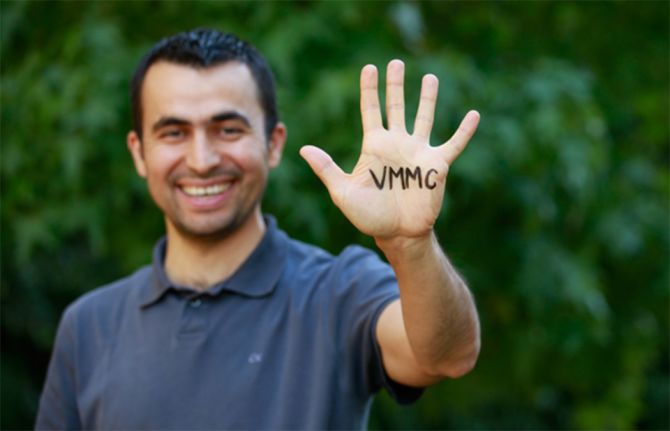
Feature Story
Voluntary medical male circumcision: a core campaign to reach the Fast-Track Targets
17 October 2016
17 October 2016 17 October 2016AIDS-related illnesses remain the single largest cause of years of life lost among adolescent boys and men of reproductive age in eastern and southern Africa, although few policies and programmes focus on HIV services for men and boys or on improving their access to health care. However, one type of programme, voluntary medical male circumcision (VMMC), stands out, as it has had reached men and boys in large numbers and is 60% effective in preventing against female-to-male transmission of HIV.
In 2007, the powerful evidence of the preventive impact of VMMC led the World Health Organization (WHO) and UNAIDS to recommend VMMC, particularly in high-burden countries with a low prevalence of male circumcision. They urged the scale-up of voluntary medical male circumcision in 14 countries—Botswana, Ethiopia, Kenya, Lesotho, Malawi, Mozambique, Namibia, Rwanda, South Africa, Swaziland, the United Republic of Tanzania, Uganda, Zambia and Zimbabwe—guided by the actions of ministries of health and other stakeholders.
The highly aspirational target set was to provide VMMC services to more than 20 million men by the end of 2016 in the priority countries. By the end of 2015, 11.7 million adolescent boys and men had been circumcised, and by the end of 2016 that number is projected to reach 14 million, a huge success by any measure. Some countries are attaining and surpassing targets. In 2015, the Gambella province in Ethiopia, Kenya and the United Republic of Tanzania all exceeded their targets set in 2011.
Today, governments and partners, such as UNAIDS, WHO and the United States President’s Emergency Plan for AIDS Relief, are focused on continuing to scale up and maintain this successful programme, but there is cause for concern. Following years of rapid increase, the annual number of circumcisions performed within eight of the 14 priority countries stayed level or decreased in 2015.
There is guidance, however, for a way forward. A new WHO and UNAIDS report, Effective HIV prevention and a gateway to improved adolescent boys’ & men’s health in eastern and southern Africa by 2021, describes the new strategic directions for the years to come. In order to reach the Fast-Track Targets, the annual number of VMMCs needs to increase to 5 million per year. At the same time, a comprehensive people-centred approach to service delivery for men and boys needs to be adopted at the country level, with tailored services to be offered to individuals in different age groups and with different risk profiles.
The report lists the following as the key elements that all stakeholders are encouraged to work together to achieve:
- Promoting VMMC as part of a wider package of sexual and reproductive services for men and boys, including comprehensive sexuality education, the use of condoms and communication around gender norms, including positive notions of masculinity.
- Using new integrated service delivery models.
- Using approaches that are tailored for various age groups and locations.
- Increasing domestic funding to ensure the sustainability of VMMV and expanding sexual and reproductive health services for men and boys.
- Developing new approaches for adolescent and early infant circumcision.
- Breaking down myths and misconceptions about circumcision.
The Clearinghouse on Male Circumcision for HIV Prevention is a collaborative effort among partners, including UNAIDS, for sharing information and resources with the international public health community. The resource library has more than 900 entries and can be searched by topic or country.
“Voluntary medical male circumcision provides a much needed entry point for reaching men and boys with other HIV prevention and health services, which would in turn benefit women and girls,” said UNAIDS Executive Director, Michel Sidibé. “We cannot reach our goals without it,” he added.
Related videos


Feature Story
Ending AIDS by 2030 requires investment in harm reduction for people who inject drugs
10 October 2016
10 October 2016 10 October 2016To end the AIDS epidemic by 2030, the global response to HIV must leave no one behind, including people who inject drugs. It requires drug policies and HIV-related prevention, treatment, care and support services that meet both the human rights and the health needs of people who inject drugs.
Estimates show that worldwide there are approximately 12 million people who inject drugs, 1.6 million (14%) of whom are living with HIV and 6 million (50%) of whom are living with hepatitis C. HIV prevalence among women who inject drugs is often greater than among their male peers. UNAIDS estimates that 140 000 people who inject drugs were newly infected with HIV globally in 2014 and there has been no decline in the annual number of new HIV infections among people who inject drugs between 2010 and 2014.
The UNAIDS report Do no harm: health, human rights and people who use drugs shows that having laws and policies that do no harm to people who use drugs and increasing investments in harm reduction programmes and services results in a decrease in new HIV infections and improved health outcomes and delivers broader social benefits.
The United Nations Office on Drugs and Crime, the World Health Organization (WHO) and UNAIDS recommend using these programmes and services as a comprehensive package, as outlined in the WHO’s consolidated guidelines on HIV prevention, diagnosis, treatment and care for key populations.
Harm reduction works
The evidence is overwhelming—harm reduction works. Opioid substitution therapy has been associated with a 54% reduction in the risk of HIV infection among people who inject drugs and has been shown to decrease the risk of hepatitis C infection, to increase adherence to antiretroviral therapy for HIV, to lower out-of-pocket health expenditures and to reduce opioid overdose risk by almost 90%.
In Australia, 10 years of needle–syringe programming has reduced the number of cases of HIV by up to 70% and decreased the number of cases of hepatitis C by up to 43%.
The evidence is also clear that laws and policies that hinder access to health services for people who use drugs do not work. For example, police surveillance of health-care and harm reduction service providers discourages people who inject drugs from accessing those services.
“Putting the AIDS response on the Fast-Track requires promoting the rights of people who use drugs to access high-quality, evidence-informed HIV harm reduction services and removing barriers to accessing these services,” says Aldo Lale-Demoz, the Deputy Executive Director of the United Nations Office on Drugs and Crime.
Having laws that offer alternatives to prosecution and imprisonment for drug use and possession of drugs for personal use reduces the harmful health effects associated with drug use and does not result in an increased use of drugs.
Community-led harm reduction programmes can reach people who inject drugs with needle–syringe exchange and other services and provide linkages to testing, treatment and care for people living with HIV. In Pakistan, for example, the Nai Zindagi Trust, a peer-led outreach programme, has been in operation for 25 years and reaches about 13 000 street-based people who inject drugs through more than 600 trained peer educators.
The case for investment
Despite the large body of evidence, however, only 80 of the 158 countries in which injecting drug use has been documented have at least one location offering opioid substitution therapy, and only 43 countries have programmes in prisons. Needle–syringe programmes are available in only 90 countries and only 12 countries provide the recommended threshold of 200 sterile needles per person who injects drugs per year.
The combination of unavailability of harm reduction services and inadequate coverage where available puts progress in the response to HIV at risk. It also denies life-saving health services to millions of people who inject drugs.
“When it comes to people who use drugs, evidence has been necessary, but insufficient, to catalyse the needed commitments from governments and donors. Harm reduction is one HIV prevention technology that clearly works, that people in need want and that costs little. Disinvestment makes neither scientific nor moral sense,” says Daniel Wolfe, of the Open Society Foundations.
Current investments in harm reduction services are insufficient. And maintenance of current levels is not enough to end the AIDS epidemic by 2030 and meet the commitments made in the 2016 Political Declaration on Ending AIDS. The majority of people who inject drugs live in middle- and upper-income countries, yet current donor policies are transitioning international aid out of middle-income countries, putting in danger the continuation of existing services and risking the reversal of successes to date.
It is hoped that affected country governments, the successful replenishment of the Global Fund to Fight AIDS, Tuberculosis and Malaria, and new initiatives, such as the Key Populations Investment Fund, will contribute significantly to scaling-up evidence-informed programming for people who inject drugs.
“People who inject drugs are among those who have been left furthest behind by the global response to HIV,” says Mauro Guarinieri of the Global Fund, “We need to recognize that the level of criminalization, discrimination and violence that people who use drugs face, can only result in driving risk-taking behaviours, excluding them from the social and health support systems they need. We must move toward treating everyone, including people who use drugs, as fellow human beings.”
Resources
Related

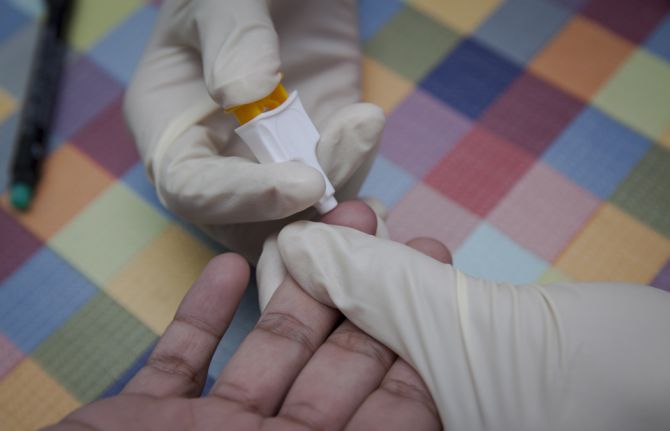
Feature Story
Decentralization of HIV testing services to increase access for people who inject drugs in Viet Nam
12 October 2016
12 October 2016 12 October 2016In Viet Nam, the Authority for HIV/AIDS Control and the Ministry of Health piloted outreach HIV testing services to increase uptake among people who inject drugs and their partners. Bi-monthly HIV testing was offered in villages where there were large communities of people who inject drugs.
The outreach team included two health service staff, one village health worker and one peer educator. People who inject drugs and their partners were invited to a convenient location and offered HIV counselling and rapid HIV tests. Reactive test results were sent for confirmatory testing and clients with a confirmed diagnosis of HIV were counselled and linked to clinics for treatment and care.
From September 2014 to January 2015, 8.9% of people tested were newly diagnosed with HIV—approximately four times higher than the percentage observed at district primary health-care facilities. The results of this pilot programme suggest that the provision of community-based HIV testing services is a feasible and efficient method of increasing knowledge of HIV status among people who inject drugs and their partners, as well as other key populations. Peer educators and village health workers were instrumental in reaching the target population. This model will inform the development of national guidelines on community-based HIV testing. Source: http://who.int/hiv/pub/guidelines/hiv-testing-services/en/.
To find out more about harm reduction, please go to the World Health Organization harm reduction page at http://who.int/hiv/topics/idu/en/ .
Resources
Consolidated guidelines on HIV testing services
Do no harm - Health, human rights and people who use drugs
Consolidated guidelines on HIV prevention, diagnosis, treatment and care for key populations
Guidance on prevention of viral hepatitis B and C among people who inject drugs
Harm Reduction International “Global State of Harm Reduction”
Region/country
Related

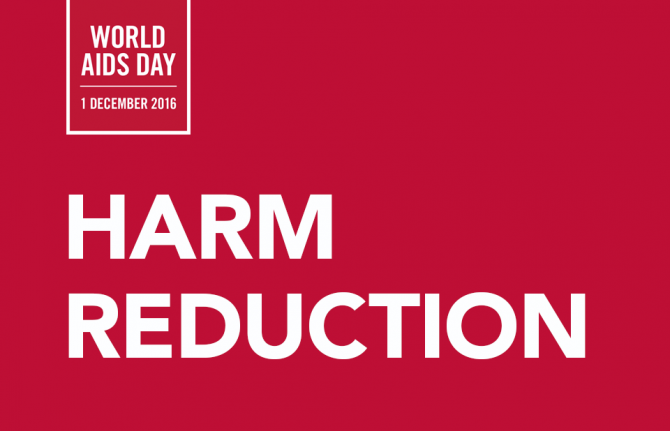
Update
Harm reduction
10 October 2016
10 October 2016 10 October 2016People who inject drugs are among the key populations most at risk to acquire or transmit HIV. Yet they are also among those with the least access to HIV prevention, care and treatment services because their drug use is often stigmatized and criminalized.
The tools and strategies required to improve the health and lives of people who use drugs are well known and readily available. Needle–syringe programmes reduce the spread of HIV, hepatitis C and other bloodborne viruses. Opioid substitution therapy and other evidence-informed forms of drug dependence treatment curb drug use, reduce vulnerability to infectious diseases, and improve uptake of health and social services.
The overwhelming body of evidence on the effectiveness of harm reduction, including in prisons and other closed settings, is the basis for a comprehensive package of interventions recommended by the World Health Organization (WHO), the United Nations Office on Drugs and Crime (UNODC) and the Joint United Nations Programme on HIV/AIDS (UNAIDS) for preventing the spread of HIV and reducing other harms associated with drug use. Few countries have achieved sufficient coverage of harm reduction services, however.
Hands up for #HIVprevention

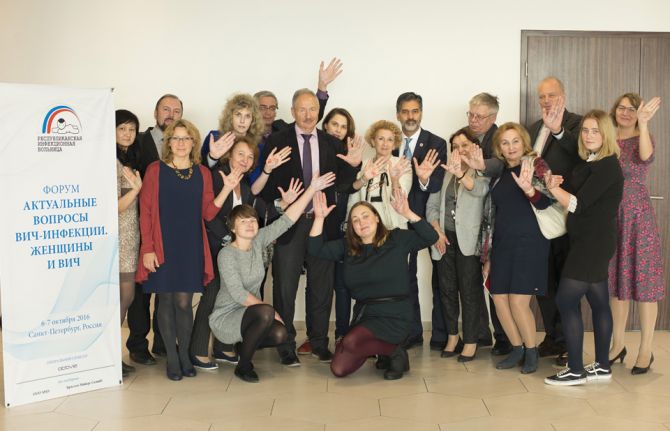
Update
Russian experts and civil society leaders join UNAIDS’ Hands Up #HIVprevention campaign
13 October 2016
13 October 2016 13 October 2016Participants at the HIV and Women Forum, held in Saint Petersburg, Russian Federation, on 6 and 7 October, joined the new UNAIDS campaign Hands up for #HIVprevention and took a series of photos illustrating what needs to be done to strengthen HIV prevention.
Leading HIV experts from 37 Russian regions and representatives of civil society and UNAIDS addressed the issues facing women affected by the country’s HIV epidemic during the annual forum. The Russian Federation has the largest HIV epidemic in the region, with more than 100 000 new HIV infections reported by the government in 2015. In eastern Europe and central Asia, 1.5 million people were living with HIV in 2015, up from 1 million in 2010.
One of the key topics discussed at the annual forum, organized by the Ministry of Health of the Russian Federation, was how to deal with women’s vulnerability to HIV. Russian experts talked about the feminization of the HIV epidemic in the Russian Federation, where the government reports that more than 38% of all new cases of HIV infection in 2015 were among women.
Women face multiple challenges and barriers to accessing HIV services, such as stigma, discrimination, gender stereotypes, barriers to sexual and reproductive health, and violence. The forum highlighted the essential role of nongovernmental and civil society organizations in promoting women’s rights and increasing access to HIV prevention, treatment, care and support services.
The 2016 Political Declaration on Ending AIDS highlights that, globally, women and girls are disproportionately affected by HIV and bear a larger share of caregiving for family members affected by HIV.
Quotes
“The alarming increase of HIV infection among women cannot be ignored and must be recognized as a priority in the implementation of HIV programmes in the Russian Federation.”
“It doesn't matter if we are community leaders or wives or mothers. It doesn't matter how we were infected with HIV. It only matters that we refuse to be the nameless, faceless statistics of HIV in the Russian Federation.”
“Fast-Track targets to end the AIDS epidemic will not be reached without breakthroughs in women health, women's rights and women's empowerment.”
Region/country

Feature Story
A look at community-based harm reduction in Indonesia
11 October 2016
11 October 2016 11 October 2016George started using drugs more than 10 years ago. At the time he lived in Jakarta, Indonesia, and worked as a driver for an international company. About one third of people who inject drugs globally live in the Asia and the Pacific region. (Photo 1)
As George’s dependence on drugs became severe, he lost his job and could no longer provide for his wife and young children. “All I could think about was where I would get my next hit. I lied. I stole. I hated myself,” recalled George. (Photo 2)
One day George heard about a novel programme based in a large house in Bogor, Indonesia. Rumah Singgah PEKA is a community-based harm reduction programme that aims to empower people who use drugs to take back control of their lives. (Photo 3)
Sam Nugraha is the Executive Director of Rumah Singgah PEKA, which he founded in 2010. He said, “Rumah Singgah PEKA is different from other treatment centres, because it is fully voluntary. Every client has made their own decision to participate.” (Photo 4)
Most of the staff at Rumah Singgah PEKA have experience with drug dependence. The facility provides a range of services, including group and individual counselling. (Photo 5)
The organization works with public health facilities to help clients access key services. Deni Subhan, Programme Manager at PEKA, often accompanies clients to get their daily dose of methadone. (Photo 6)
Siti Nurfaiza, Programme Manager at Gedung Badak Health Clinic, finds the collaboration with PEKA good. She said, “Methadone is very helpful for the heroin user, since it helps people with drug dependence to maintain their physical, psychological and social activities.” (Photo 7)
Deni Subhan picks up a five-day supply of methadone for clients, who can then access their daily dose at PEKA, which has much more flexible hours than public health facilities. (Photo 8)
George has gradually decreased his methadone dose. He now works for PEKA and is once again able to provide for his family. (Photo 9)
George said, “All of us are entrusted to make our own decisions. If we wish to make a good decision, the community is here to help.” (Photo 10)


